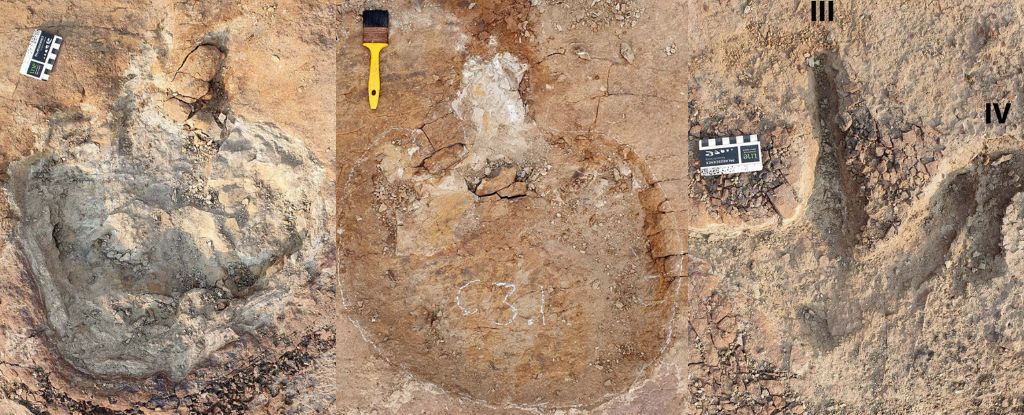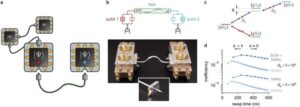
A recent discovery at Canada’s Dinosaur Provincial Park has unveiled a remarkable set of dinosaur tracks dating back approximately 76 million years. An international team of paleontologists has found evidence suggesting that different species of dinosaurs may have coexisted and possibly moved in herds. This groundbreaking finding could change our understanding of dinosaur social behavior.
The trackways, preserved in ironstone, represent the first significant collection of dinosaur footprints found in the area. Among these tracks, researchers identified prints from at least five ceratopsian dinosaurs alongside those of an ankylosaurid. This combination may mark the first indication of multi-species herding among dinosaurs, raising intriguing questions about their social structures.
According to Jack Lovegrove, a paleontologist at the Natural History Museum in London, the presence of ceratopsians in herds has long been theorized. He stated, “Ceratopsians have long been suspected to have lived in herds due to the existence of bone beds which preserve multiple individuals of the same species together. However, these bone beds only tell us for certain that these animals died together or that the bodies accumulated after death. The preserved trackways of several ceratopsians walking together in a group is rare evidence for these animals living together.”
The positioning of the footprints suggests that these dinosaurs were likely visiting a water source, possibly following an ancient river. In a chilling twist, parallel tracks indicate the presence of predators in the vicinity, including two tyrannosaurs and a smaller meat-eating dinosaur, possibly a therapod.
Phil Bell, a paleontologist from the University of New England in Australia, commented on the implications of these predator tracks: “The tyrannosaur tracks give the sense that they were really eyeing up the herd, which is a pretty chilling thought, but we don’t know for certain whether they actually crossed paths.”
The discovery of these trackways not only provides insight into the behavior of these ancient creatures but also opens up opportunities for further research. Lovegrove noted that this finding has enabled researchers to identify many more trackways within the park, promising deeper insights into how these dinosaurs lived alongside each other.
The research detailing these findings has been published in the scientific journal PLOS One, marking a significant contribution to the field of paleontology. As scientists continue to study these tracks, they hope to uncover more details about the complex ecosystems of the Cretaceous period and the interactions between various species of dinosaurs.







